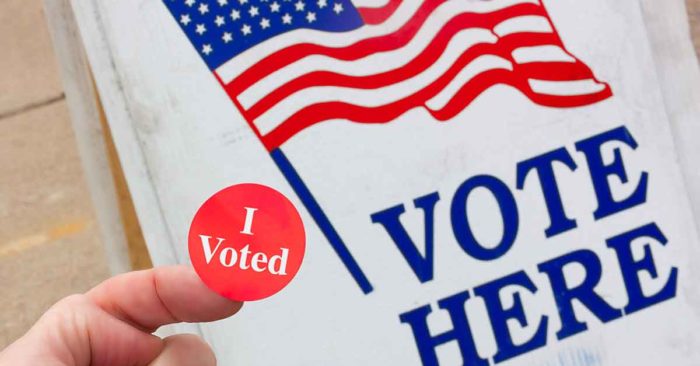Election 2020: The Changing Electorate in Swing States
Date: October 15, 2020

With the election less than three weeks away, attention is quickly turning to several swing states where the election may ultimately be decided. Using Cook Political Report’s rating system for states (as of October 13), we examined the 13 states that they rate as “Lean Democratic” (Arizona, Michigan, Minnesota, Nevada, New Hampshire, Pennsylvania, Wisconsin), “Toss Up” (Florida, Georgia, Iowa, North Carolina, Ohio), or “Lean Republican” (Texas). Overall in these states, we find that the electorate has been diversifying at a faster rate than the national average.
- In swing states, the share of the non-college-educated non-Hispanic white share of the electorate fell by 6.8 percentage points, compared to a decrease of 6.4 points nationwide. In some states, the decline in non-Hispanic white non-degree holders in the electorate fell by significantly more, including in Nevada (-9.1 points), Florida (-7.6), Minnesota (-7.2), Arizona (-7.1), and Texas (-6.4).
- Overall, there are almost 1.8 million less non-college-educated non-Hispanic white voters in swing states than there were in 2010. In comparison, there were almost 3.7 million more college-educated non-Hispanic white eligible voters in swing states than in 2010.
- The share of non-Hispanic whites, regardless of education, shrank in every swing state, outpaced by the growth in non-White and Hispanic segments of the electorate. However, in one state, Pennsylvania, the number and the share of non-Hispanic eligible voters decreased. Since 2010, Pennsylvania has seen a decrease of more than 142,000 non-Hispanic white eligible voters.
- Four swing states saw dramatic increases in the Hispanic share of their electorates since 2010, including Nevada (+4.5), Florida (+4.4), Arizona (+4.3), and Texas (+4.0). Overall, there were almost 3.7 million more Hispanic eligible voters in swing states than there were in 2010. Of these new Hispanic eligible voters, more than 1.4 million are in Texas, 1.0 million are in Florida, and 361,000 are in Arizona.
- Several swing states also saw significant increases in the immigrant share of the electorate, including Florida (+2.7), Nevada (+2.2), Minnesota (+2.1), and Texas (+1.5). Overall, there were almost 2.1 million more immigrant eligible voters in swing states than there were in 2010, including 697,000 in Florida, almost 500,000 more in Texas, and almost 144,000 in Georgia.
Table 1: Change in Eligible Voters in Swing States, 2010-2018
| State | Non-Hispanic White | Non-Hispanic White, No College Degree | Black/African American | Asian | Hispanic | Other | PVI Rating |
| Arizona | 223,300 | 10,900 | 60,300 | 43,400 | 361,300 | 64,500 | Lean D |
| Florida | 520,200 | -100,800 | 401,500 | 111,400 | 1,017,500 | 104,700 | Toss Up |
| Georgia | 166,800 | -81,700 | 345,200 | 72,300 | 154,000 | 64,600 | Toss Up |
| Iowa | 15,600 | -61,900 | 2,900 | 19,200 | 27,700 | 6,400 | Toss Up |
| Michigan | 87,600 | -183,500 | 24,700 | 52,100 | 63,400 | 34,700 | Lean D |
| Minnesota | 96,100 | -127,000 | 62,300 | 49,000 | 44,700 | 19,800 | Lean D |
| Nevada | 29,900 | -38,100 | 45,900 | 47,000 | 136,900 | 33,000 | Lean D |
| New Hampshire | 41,500 | -12,200 | 4,300 | 7,000 | 13,500 | 4,000 | Lean D |
| North Carolina | 344,600 | -52,700 | 200,600 | 50,500 | 139,600 | 55,600 | Toss Up |
| Ohio | 18,900 | -309,700 | 56,700 | 37,500 | 73,400 | 66,600 | Toss Up |
| Pennsylvania | -142,300 | -508,600 | 46,700 | 64,200 | 163,600 | 46,100 | Lean D |
| Texas | 447,400 | -169,700 | 399,100 | 233,100 | 1,433,000 | 110,100 | Lean R |
| Wisconsin | 54,600 | -123,500 | 25,000 | 24,000 | 41,500 | 13,900 | Lean D |
Table 2: Change in Share of Electorate in Swing States, 2010-2018
| State | Non-Hispanic White | Non-Hispanic White, No College Degree | Black/African American | Asian | Hispanic | Other | PVI Rating |
| Arizona | -5.9% | -7.1% | +0.6% | +0.5% | +4.3% | +0.3% | Lean D |
| Florida | -6.0% | -7.6% | +0.7% | +0.5% | +4.4% | +0.5% | Toss Up |
| Georgia | -4.5% | -5.9% | +1.3% | +0.8% | +4.4% | +0.7% | Toss Up |
| Iowa | -2.2% | -4.9% | +0.1% | +0.8% | +1.1% | +0.2% | Toss Up |
| Michigan | -1.6% | -4.6% | -0.1% | +0.6% | +0.7% | +0.4% | Lean D |
| Minnesota | -3.6% | -7.2% | +1.3% | +1.0% | +0.9% | +0.3% | Lean D |
| Nevada | -7.9% | -9.1% | +1.0% | +1.3% | +4.5% | +1.1% | Lean D |
| New Hampshire | -2.4% | -5.5% | +0.4% | +0.6% | +1.2% | +0.3% | Lean D |
| North Carolina | -2.9% | -6.1% | +0.4% | +0.5% | +1.5% | +0.5% | Toss Up |
| Ohio | -2.2% | -5.3% | +0.3% | +0.4% | +0.8% | +0.7% | Toss Up |
| Pennsylvania | -3.0% | -6.3% | +0.3% | +0.6% | +1.6% | +0.5% | Lean D |
| Texas | -5.6% | -6.4% | +0.3% | +0.8% | +1.6% | +0.5% | Lean R |
| Wisconsin | -2.2% | -5.4% | +0.4% | +0.5% | +1.1% | +0.2% | Lean D |
Table 3: Change in Immigrant Eligible Voters in Swing States, 2010-2018
| State | Change in Immigrant Eligible Voters, 2010-2018 | Change in Immigrant Share of Electorate, 2010-2018 | Immigrant Share of Electorate, 2018 |
| Florida | 697,500 | +2.7% | 15.9% |
| Nevada | 80,400 | +2.2% | 14.0% |
| Minnesota | 95,000 | +2.1% | 5.8% |
| Texas | 499,900 | +1.5% | 9.7% |
| Georgia | 144,000 | +1.4% | 6.1% |
| Arizona | 121,000 | +1.4% | 8.3% |
| Pennsylvania | 134,000 | +1.3% | 4.8% |
| Michigan | 91,700 | +1.1% | 4.7% |
| New Hampshire | 13,900 | +1.1% | 4.5% |
| North Carolina | 100,800 | +1.0% | 3.9% |
| Wisconsin | 34,600 | +0.7% | 2.9% |
| Iowa | 15,900 | +0.6% | 2.8% |
| Ohio | 57,400 | +0.6% | 3.1% |
| All Swing States | 2,085,700 | +1.7% | 7.7% |






